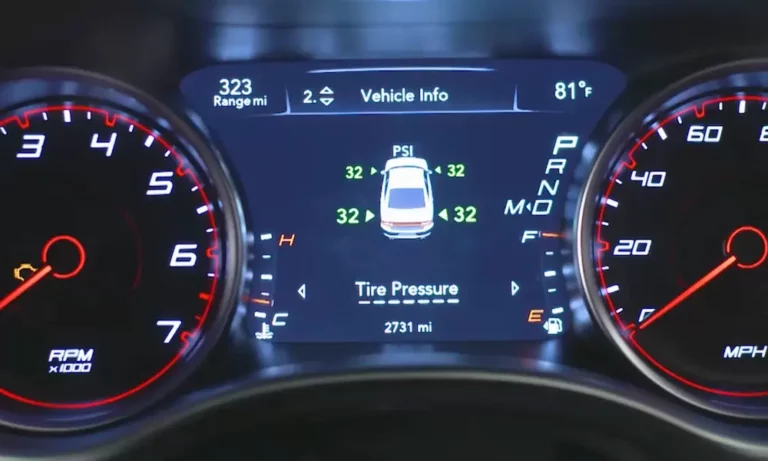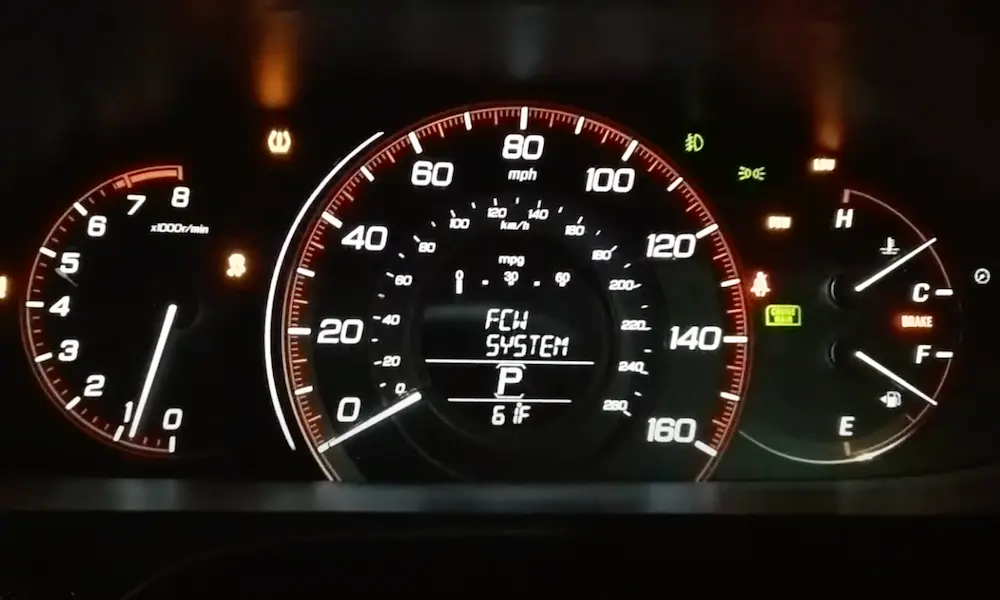Ever noticed that pesky tire pressure light on your Dodge Charger’s dashboard? It’s not just an annoyance—it’s your vehicle’s way of communicating about safety. But when the light stays on even after you’ve checked that all tires are properly inflated, you’ll need to reset your tire pressure monitoring system (TPMS).
Let’s walk through everything you need to know about resetting the tire pressure sensors in your Dodge Charger, from simple driving resets to more involved procedures when things get complicated.
Understanding Your Dodge Charger’s TPMS System
Dodge Chargers come equipped with sophisticated tire pressure monitoring systems that do more than just flash a warning light. Depending on your model year, you might have one of two systems:
Basic vs. Premium TPMS Systems
Your Charger either has a base system or a premium system:
- Base TPMS: Includes sensors attached to each wheel through the valve stem, a central receiver (Wireless Ignition Node or WIN), and a warning light. This system alerts you to low pressure but doesn’t specify which tire is affected.
- Premium TPMS: Includes the same components plus wheel sensor transponders in three of the four wheel wells, an electronic display, and an indicator lamp. This advanced system tells you exactly which tire needs attention and even triggers an audible alert.
Both systems monitor only the four road tires—the spare tire isn’t included in the monitoring. The sensors transmit radio frequency (RF) signals that are decoded by the TPMS module, which then communicates with your dashboard display.
Simple Driving Reset Procedure
For most Dodge Charger owners, the easiest reset method requires nothing more than taking your car for a short drive.
The 15 MPH Method
This works especially well for 2008-2013 models:
- Make sure all tires are properly inflated to the pressure listed on the sticker inside your driver’s door jamb
- Drive your Charger at speeds above 15 mph
- Continue driving for at least two minutes
- The system will automatically recalibrate and turn off the warning light
This method is effective because sustained driving gives the sensors time to transmit signals to your car’s TPMS module. The system needs this data to verify proper tire pressure and reset itself.
The driving reset is particularly useful after temperature drops have caused normal pressure fluctuations. In colder weather, tire pressure naturally decreases as air molecules compress, often triggering the TPMS light even when your tires are otherwise fine.
Manual Reset Procedures for Dodge Chargers
When the driving reset doesn’t solve your problem, you can try a manual reset procedure instead.
Using the TPMS Reset Button
For many Dodge Charger models, follow these steps:
- Turn the engine off
- Turn the key to the “On” position (without starting the engine)
- Locate and hold the TPMS reset button until the tire pressure light blinks three times
- Release the button
- Start the car
- Wait approximately 20 minutes for the system to refresh
The location of your reset button varies by model year and trim level. It might be:
- On the dashboard near the steering column
- Within the vehicle’s infotainment system menu
- Under the steering wheel
Check your owner’s manual for the exact location in your specific Charger model.
Troubleshooting Persistent TPMS Issues
If basic reset procedures aren’t working, it’s time to dig deeper into potential problems.
Checking the TPMS Fuse
A blown fuse could be preventing your TPMS from functioning correctly:
- Ensure your vehicle is turned off with keys removed
- Locate the main fuse box in the trunk area
- Find the TPMS fuse at position #25 (10A)
- Visually inspect the fuse—a broken metal strip indicates it’s blown
- Replace with a new 10A fuse if necessary
This fuse check applies primarily to seventh-generation Dodge Chargers (2011-2021). A simple fuse replacement can save you considerable time and money before pursuing more complex solutions.
Identifying System Faults
When your TPMS detects a serious fault, it signals with a specific pattern:
- The warning light flashes for 75 seconds
- The light then remains solidly illuminated
- An audible chime sounds to alert you
- This sequence repeats each time you cycle the ignition
This pattern helps distinguish between simple low tire pressure and more significant system malfunctions that require attention.
Dealing With TPMS Sensor Replacement
Sometimes the sensors themselves need to be replaced, which requires additional steps to restore proper system function.
When Sensors Need Replacement
TPMS sensors typically fail for one of these reasons:
- Battery depletion (most have a 5-7 year lifespan)
- Physical damage during tire service
- Corrosion from environmental exposure
When installing new sensors, you must select compatible replacements that match your vehicle’s specifications. Using the wrong sensors can lead to continued malfunctions and warning lights.
The Relearning Process
After sensor replacement, your Charger needs to “learn” the new sensor IDs:
- OBD TPMS Relearn: This procedure writes the sensor IDs to your vehicle’s Electronic Control Unit (ECU) through the OBD-II port
- Professional Retraining: Uses specialized equipment to program new sensor IDs directly into the WIN or TPMS module
While some advanced DIY enthusiasts might have access to TPMS programming tools, this procedure is typically best performed by qualified technicians with access to Dodge-specific equipment.
Step-by-Step TPMS Reset After Tire Rotation
Tire rotation is a common maintenance procedure that can trigger your TPMS warning light because the sensors change position.
Reset Procedure After Rotation
- Make sure all tires are inflated to the proper pressure
- Start with the driving reset method: drive above 15 mph for at least two minutes
- If the warning light persists, try the manual reset method using your vehicle’s TPMS button
- For stubborn cases, you may need to use a TPMS tool to “retrain” the system to recognize the sensors in their new positions
Most Dodge Chargers don’t require a complete relearn after simple tire rotation, but models with location-specific monitoring (premium system) might need professional assistance to recognize the new tire positions.
Common TPMS Error Messages and Their Meanings
Understanding error messages helps diagnose the specific issue with your system.
| Error Message | Meaning | Typical Solution |
|---|---|---|
| “Service Tire Pressure System” | System malfunction detected | Check TPMS fuse, inspect for sensor damage |
| “Tire Pressure Low” | At least one tire below threshold | Inflate tires, perform driving reset |
| Flashing TPMS light | System fault or sensor communication issue | Replace sensors or seek professional diagnosis |
| Solid TPMS light | Low tire pressure detected | Check all tires, inflate as needed |
Seasonal Tire Pressure Changes and TPMS Function
Temperature fluctuations significantly impact tire pressure and TPMS operation.
Managing Seasonal Transitions
Temperature changes of 10°F can change tire pressure by about 1 PSI. This means seasonal transitions often trigger your TPMS warning light even when nothing is wrong with your tires.
During fall and winter:
- Check tire pressure more frequently
- Expect to add air as temperatures drop
- Reset your TPMS after adjusting pressures
During spring and summer:
- Monitor for potential over-inflation as temperatures rise
- Adjust to recommended pressures if needed
- Perform a TPMS reset after making adjustments
The National Highway Traffic Safety Administration recommends checking tire pressure monthly regardless of season to ensure optimal safety and performance.
Impact of Aftermarket Wheels on TPMS Function
Installing aftermarket wheels on your Dodge Charger can complicate your TPMS operation.
Ensuring Proper TPMS Transfer
When upgrading to aftermarket wheels:
- Confirm the new wheels can properly accommodate TPMS sensors
- Explicitly request verification that sensors are correctly transferred during installation
- Ask the installer to confirm proper programming after the transfer
- Test drive the vehicle to ensure the system functions correctly
Some aftermarket wheels may require sensor extensions or adapters for proper fitment. Always use compatible components to maintain TPMS functionality.
Tools for DIY TPMS Diagnosis and Reset
If you’re comfortable with basic automotive maintenance, several tools can help you manage TPMS issues.
Essential TPMS Tools
- Digital tire pressure gauge: For accurate pressure readings
- TPMS activation tool: Wakes up sensors for testing without driving
- OBD-II scanner with TPMS functions: Reads specific TPMS fault codes
- Tire inflator: Allows precise pressure adjustment
For most basic resets, you won’t need specialized equipment beyond a reliable tire pressure gauge. However, for sensor replacement or complex diagnostics, professional-grade tools provide more options.
When the Battery is Disconnected
A disconnected battery can sometimes affect your TPMS settings.
Restoring TPMS After Battery Service
After reconnecting your battery:
- Start the engine and let it run for a few minutes
- Take your Charger for a drive above 15 mph for at least two minutes
- The system should automatically recalibrate
In most cases, a battery disconnect won’t cause permanent TPMS issues, but the system may need time to initialize properly after power is restored.
The Importance of Correct Tire Pressure
Maintaining proper tire pressure isn’t just about avoiding warning lights—it’s critical for safety and vehicle performance.
Benefits of Optimal Tire Pressure
- Improves fuel economy by up to 3%
- Extends tire life by reducing uneven wear
- Enhances handling and braking performance
- Reduces the risk of blowouts and accidents
The NHTSA reports that vehicles with underinflated tires are three times more likely to be involved in a crash related to tire issues.
Decoding Dodge Charger TPMS Part Numbers
When replacing sensors, using the correct part numbers ensures compatibility.
Finding the Right Sensors
For most Dodge Chargers, the OEM sensor part numbers are model-year specific. When purchasing replacement sensors, provide the following information to ensure compatibility:
- Vehicle year
- Vehicle model and trim level
- VIN number (for precise matching)
- Whether you have the base or premium TPMS system
Using the wrong sensors can result in communication failures, false warnings, or complete system malfunction.
TPMS System Maintenance Best Practices
Proper maintenance helps avoid TPMS problems before they start.
Prolonging Sensor Life
- Have tire service performed by technicians experienced with TPMS
- Request careful handling of sensors during tire changes
- Replace sensor batteries or complete sensors at recommended intervals
- Clean valve stems regularly to prevent corrosion
- Consider replacing all sensors at once when one fails (especially if they’re all the same age)
Regular maintenance not only prevents TPMS issues but also extends the life of your Dodge Charger’s tires and improves overall driving safety.














